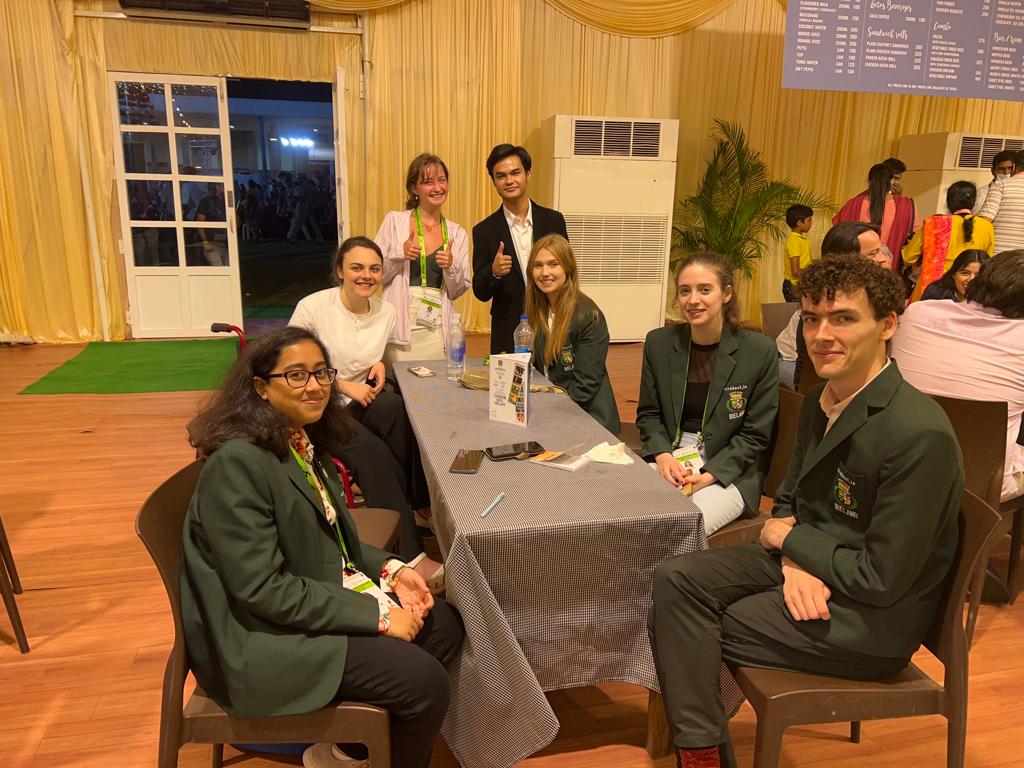Day 1 at 44th Chess Olympiad 2022 has been great for Ireland as it registered wins in all games in both open and women’s category.
In the open category, Ireland played and won 4 games against Maldives while in women category, Ireland played and won 4 games against Myanmar.


Tarun analysed his own game against Yazeed Mujahid Bin from Myanmar. Here is a snippet.
[pgnv]
[Event “WCO”]
[Site “Chennai, India”]
[Date “2022.07.29”]
[Round “1.59”]
[White “Kanyamarala Tarun”]
[Black “Yazeed Mujahid Bin”]
[Result “1-0”]
[WhiteElo “2379”]
[BlackElo “1418”]
[Annotator “tarun”]
[UTCDate “2022.07.29”]
[UTCTime “18:28:42”]
[Variant “Standard”]
[ECO “A02”]
[Opening “Bird Opening”]
{ Last night, while having Dinner COD (Conor O’Donnell – Women’s Team Captain)
was telling Behind The Scenes when Ireland was paired against the Maldives in the last round of
Batumi Olympiad. He said if I had played 1.g4/h4 and won I would get some
incentive. With that in mind, I was thinking why not follow that spirit, hence I
played Bird – an offbeat first move! }
1. f4 f5 { I didn’t expect this. The position already is new for
both of us – just what I wished for. } 2. Nf3 Nf6 3. g3 d5 4. Bg2 (4. c4 { I could have played this move eariler, but I thought I could do it later. }) 4… Be6?! { Initially I was suprised of this. After a few seconds of thought
I felt this an equally good alternative, because it prevents c4 and prepare
the classic Stonewall manoeuvre. } (4… e6) 5. O-O (5. c4 dxc4 { I was afraid of this, probably I am
not getting my pawn back. } 6. Ne5 c6 { It didn’t feel right to enter here. } (6… Bd5)) 5… Qc8?! { I had no clue why he played this. Later after the game,
I asked what was the reason he replied, I wanted to overprotect f5 before
dropping back the bishop to f7. } 6. b3 Bf7 7. c4 { Played in a flash. } 7… c6 (7… dxc4 8. Ne5 { I get
this much needed tempo. Now white attacks Bishop on f7, threatens to recapture
bxc4 and most importantly opening the bishop’s diagonal } 8… cxb3 (8… e6 { could be answered with } 9. bxc4 $16) 9. Nxf7 Kxf7 10. Qxb3+ e6 11. Bxb7 $18) 8. Bb2 Nbd7 (8… dxc4 9. Ne5 cxb3 10. Nxf7 Kxf7 11. Qxb3+ Ke8 12. Na3 Nbd7 13. Rac1 { This is crushing }) 9. cxd5 cxd5 10. Nc3 Qc5+ 11. Kh1 (11. e3 { This
strengthens the dark-squares and gives provision to connect rook by playing
Qd1-e2. On the downside, this hinders the key pawn break ideas – d3, e4. }) 11… e6 12. Rc1 Qa5 13. Nd4!? (13. d3) (13. Ng5 Be7 14. d3 Ng4 { this was the
problem }) 13… a6 14. d3 Bc5 (14… Ng4 { In many line when I play d2-d3 this
was annoying however my point of playing Nd4 can be seen here: } 15. Nc2) 15. Nc2 (15. Na4 Be7 16. Bc3 Qd8 17. Qd2 { This is probably the best, even engine
confims this }) 15… h5 { I didn’t this coming } 16. h4 { I had no shame in
weakening my king-side pawn structure, because it is not clear how black can
exploit white’s weaknesses and most importantly I had no option other than
this:) } 16… Be7?! { This was tooooo slow. I asked Mujahid why he didn’t maintain
the initiaive. He said I wanted to preserve the bishop – In my opinion he has
a momentary lapse. } 17. e4 O-O?! (17… dxe4 18. dxe4 fxe4 19. Nxe4 Qxa2 { This would have been complicated }) 18. Ne3 dxe4 (18… d4 19. Nc4!) 19. dxe4 Bc5 20. Nc4 Qc7 21. Na4 { From here I think it was smooth sailing. Conclusion:
I shouldn’t have got into a situation where I had to play h4. I should have played more actively with Na4. } 21… Rad8 22. Qe2 Ba7 23. e5 Nd5 24. Nd6 Qb8 25. Bxd5 exd5 26. Nxf5 b5 27. e6 bxa4 28. exf7+ Rxf7 29. Ne7+ Kf8 30. Ng6+ Kg8 31. Qxh5 Rf6 32. Ne7+ Kf8 33. Nc6 Qb5 34. Bxf6 Nxf6 35. Qh8+ Ng8 36. Nxd8 Be3 37. Ne6+ Kf7 38. Qxg7+ { 1-0 White wins. } 1-0
[/pgnv]




